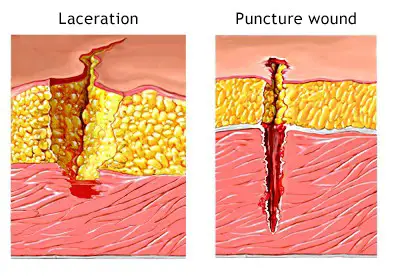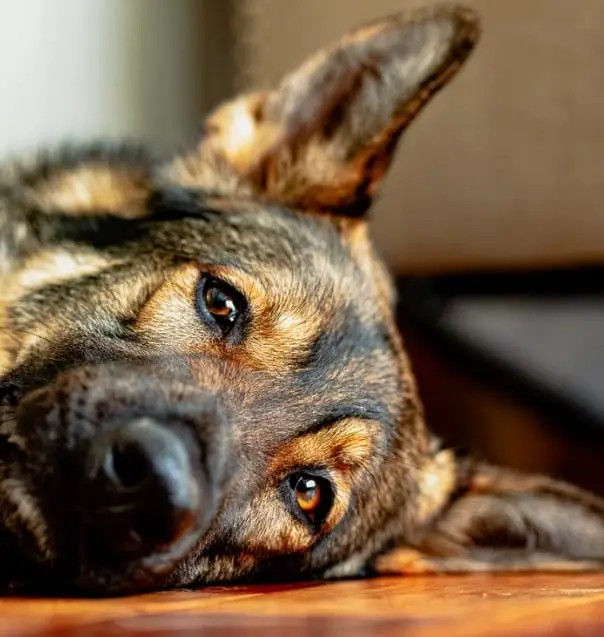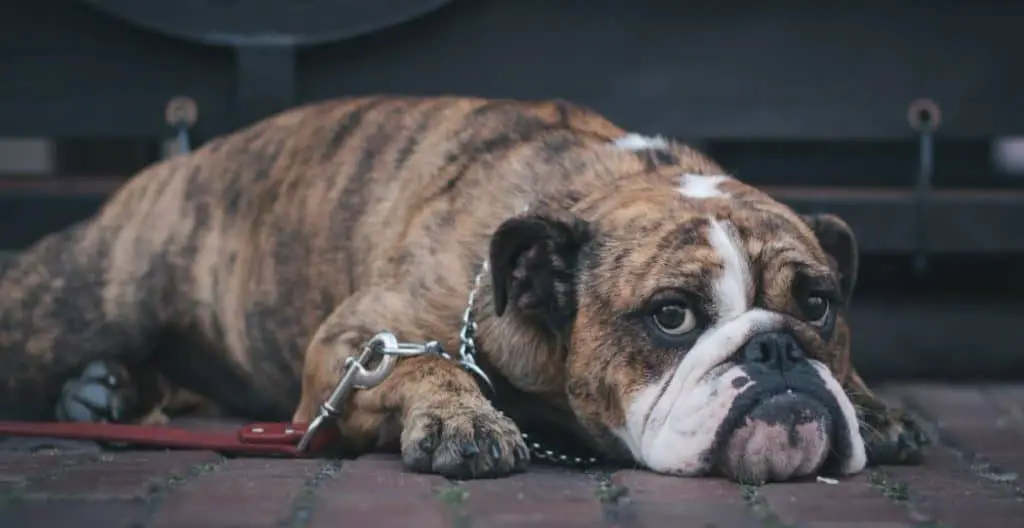As an Amazon Associate I earn from qualifying purchases.
Our Associate portal can be found here
The practice of domestication and the use of dogs for hunting began more than 8,000 years ago. There are carvings in the Arabian Peninsula in Western Asia that showcases how dogs were used for hunting.
Hunting dogs constantly face the risk of being injured in the field. The proof of using dogs for hunting purposes suggests that there might have been options to treat wounded dogs even then. While most injuries might be superficial, the risk of infections remains high and a small injury can become a major health issue for your hunting dog.
Some of the causes of injuries for hunting dogs include falling into old wells, being scratched or stepping on rusty barbed wire, and experiencing attacks from other animals.
Remember that we are not veterinarians but experienced hunters so if you are worried you should go and see a professional and just take our texts as friendly advice.
Common Injuries for Hunting Dogs
Cuts/Incised Wounds
Cuts or incised wounds are quite common in hunting dogs, as these dogs are usually running in bushy and forested areas. Cuts or incised wounds are caused by sharp objects. They usually leave a clean-cut wound because of the force of the sharp object that caused the cut. They are caused by slashes resulting from pieces of glass, metallic objects left on the ground, and other sharp objects. The ends of cut wounds are usually straight making them easy to stitch or staple in a straight line.
Lacerations
Most lacerations wounds lead to tearing of the upper layer of the skin. Unlike cuts incised wounds, lacerations are usually, irregular or jagged and often deeper than cuts while cuts are usually longer and not deep. Your hunting dog is likely to get a laceration wound while trying to maneuver their way across a barbed wired fence. Dry tree branches can also cause lacerations. Lacerations wounds have a high risk of getting infected especially if they occurred on a large surface area.
Puncture wounds
Puncture wounds are almost similar to cuts and lacerations but are caused by sharp pointed objects like nails, the teeth of other animals, tacks, or thorns. They are much deeper than cuts and lacerations and might not bleed excessively when compared to cuts. If you are not keen, you might not notice a puncture wound on your dog. Like other open wounds, puncture wounds can also get infected if not cared for properly. The image below shows the difference between a laceration and a puncture wound.

Snakebites
Your hunting dog is constantly in danger of getting bitten by a snake as snakes are commonly found in bushy and forested areas. Factors such as the location of the snakebite, the amount of venom injected, the weight of your dog, and the amount of time that passes between when the incident occurred and when the dog received appropriate treatment determine the survival of your dog after the snakebite. Your hunting dog has a higher likelihood of surviving if it has bitten on the limbs as opposed to a neck bite. Similarly, the administration of the right anti-venom within the shortest period reduces the risks of complications or death.
Broken bones
Fractures are not as common as other injuries when you are working with your hunting dog but they can still happen. A hunting dog can get a fracture by accidentally running into foot traps designed for other animals like bears, wild pigs. Always check for signs of extreme weakness, difficulty in breathing, and changes in your dog’s walking and posture when assessing for injuries.

Ways of Managing Most Hunting Dogs Injuries
Cuts, lacerations, and punctures:
These injuries can be managed by cleaning the areas around the wound with clean water to remove any dirt from the area. Cleaning the wound will give you a chance to evaluate the extent of the injury. After cleaning the area, you can apply an antibiotic ointment to reduce the risks of infections and create a protective barrier between the wound and dirt or contaminants.
Cover the area with a gauze and ensure that you do not apply excessive pressure on the area to promote circulation. If the wound is deep, ensure that you take your hunting dog to a veterinary doctor afterward for proper evaluation and treatment.
Fractures:
If your hunting dog gets a fracture while you are in the field, you will need to take the dog to a veterinary doctor for a possible x-ray to determine the extent of the fracture. The veterinary doctor might also have to assess for internal organ injuries, shock, and neurological problems. Before leaving the hunting grounds, if the fracture occurred on the dog’s limbs, you can alleviate your hunting dog’s pain and discomfort by lightly tying a splint on the limb.
Snakebites:
In case of a snakebite, call for emergency veterinary services. Your dog has a high likelihood of surviving if you leave and go to the veterinary doctor immediately. While on your way to the vet, ensure you keep your dog as calm as possible and restrain the dog’s movement to reduce the spread of the venom.
Hunting Dog First Aid Kit
There is a very low likelihood that you will be able to access a veterinary doctor while hunting with your dog in the middle of nowhere. While you might not have all the skills that professional veterinary doctors might possess, being able to clean and dress a minor wound can go a long way in reducing the risks of infections when your hunting dog gets hurt.
Some of the things that you can carry in your hunting dog’s first aid kit include tweezers, self-adherent bandages, sterile gauze bandages, medical adhesive tape, sterile eyewash, sterile gloves, cold packs, and a pair of scissors.
Additional Preventive Measures
It is impossible to determine whether your hunting dog will get injured during the hunting activities. Important preventive measures that you can take to reduce the likelihood of injury include:
- Carrying enough water for your dog to keep the dog hydrated.
- Take breaks with your dog to avoid exhaustion
- Ensure your dog is up to date with all his vaccinations
- If you will be hunting far from your vehicles, ensure you have essential first aid items with you.
- Snake-proof your dog: Enroll your hunting dogs for a snake-avoidance program that can ensure that your hunting dog learns tricks of avoiding snakes. It will also ensure that the dog understands what to do whenever he or she runs into a snake.
Final Words
Although injuries are common and might be unavoidable in some instances, understanding how to treat common injuries that affect hunting dogs places you in a better position of assisting your dog. Invest in basic first aid kit items that you can carry during your hunting trips to ensure that you are always prepared to handle common injuries. Additionally, adhere to the preventive measures mentioned above to increase your dog’s survival rates in case of an injury.
For more reading please check out our guide on how to exercise your hunting dog.
Amazon and the Amazon logo are trademarks of Amazon.com, Inc, or its affiliates.

36 years old, been hunting and fishing my entire life – love the outdoors, family, and all kinds of hunting and fishing! I have spent thousands of hours hunting hogs and training hunting dogs, but I’m always learning new stuff and really happy to be sharing them with you! hit me up with an email in the contact form if you have any questions.



